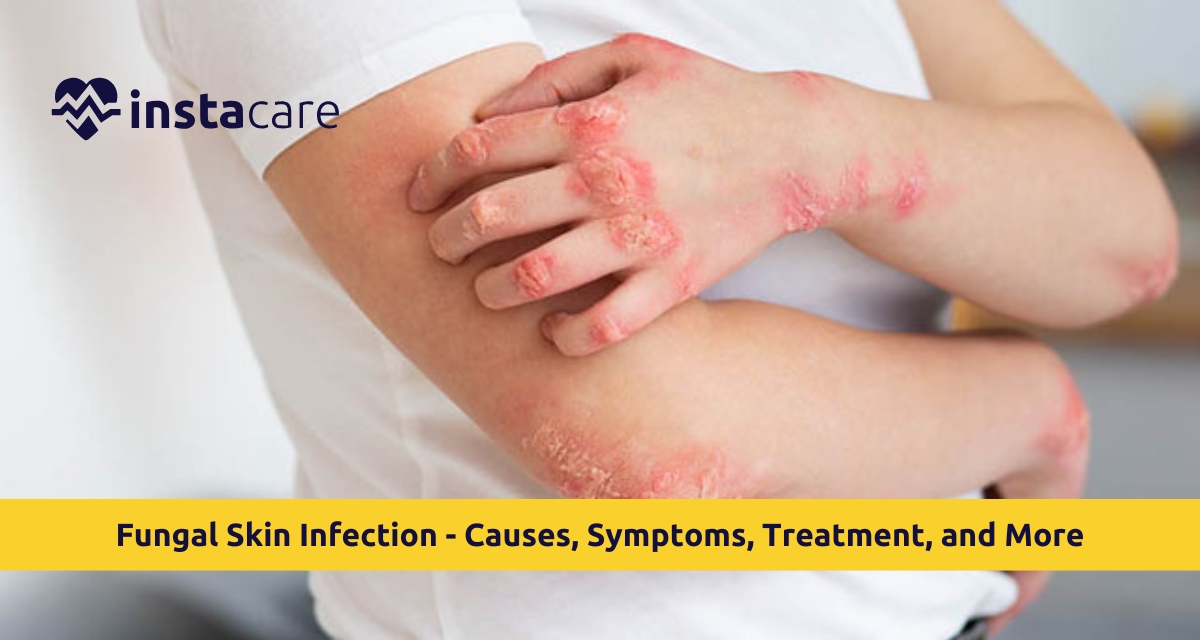Fungal Skin Infection: Causes, Symptoms, Treatment, and Much MoreThere are millions of individuals suffering from Fungal skin infections throughout the world. It is just an ordinary generalized infective disease, manifested by several parts of the body, having discomfort or, more so, itching and even leads to embarrassment. Additional to treatment knowledge about the cause of fungal skin infection along with its transmission methods and symptoms and available treatment solutions would be extremely helpful.
What Are The Causes Of Fungal Skin Infection?
Causes of fungal skin infections are associated with warm and humid conditions. These infections include those caused by dermatophytes, yeasts, and molds. Fungi feed on sweat and waste of the body. There are most commonly found surfaces of infection: armpits, groins, and feet.
Fungi emerge best under warm, moist conditions. Their filth, in combination with accumulations of sweat and dead skin cells, provides an ideal atmosphere for such organisms to flourish. Tight clothing may also serve as a "temporary moisture source," helping spread infection. The risk of fungal infection increases for people living with an immunodeficiency state and individuals who recently received antibiotic treatment.
Symptoms of Fungal Skin Infections
The prompt diagnosis of the Symptoms of fungal skin infection is to treat the infection caused mainly by skin fungal pathogens. The symptoms mostly vary depending on the type of fungus involved; usually, after too much itching, long-lasting reddening and swelling of the affected area result. In most cases, with a Fungal infection rash caused due to itching in the diseased area, a picture of a clear-to-defined boundary appears. Also, sometimes, dry, peeling hard, and even intense pain associated with blistering is felt.
Most fungal diseases, for example, present as a reddened ring-like rash with a lighter center, which mostly applies to Ringworm treatment. It would be burning and itchy between the toes for Athlete’s foot prevention and treatment and peel skin. Yeast skin infection creates inflammatory red lesions alone or with a few pustules.
Medication for Fungal Infections
These agents can also be used topically or orally for dermatological and infective infections caused by fungi. The therapy to be given depends on the involvement and severity of the infection. Clotrimazole, miconazole, and terbinafine usually form the first line of topical Best antifungal for skin infection therapy. In intense disease cases, fluconazole or itraconazole is given in oral form.
Preventing Fungal Skin Infections With Natural Cure
Tea tree oil, diluted coconut oil, or apple cider vinegar are among the Natural remedies for fungal infections some people use to reduce symptoms. However, clinical literature regarding their actual efficacy in journals remains rather inconclusive, notwithstanding their well-known popularity. It is better to consult your doctor for diagnosis and treatment.
Preventing fungal skin infections is always easier than treating them. Cleanliness is the best policy. Regular washing of the body with soap and water preserves the skin under humid conditions. It also dries; applying powders to sweating areas and getting out of wet clothes quickly minimizes the risk even further.
Loose garments but breathable would also be appropriate. Dry, loose, moisture-wicking top and bottom attire with good ventilation maximizes the drying effect and minimizes precautions for fungal growth. Sharing things like towels, shoes, or clothing is not advisable.
Some Home Remedies for Fungal Skin Infection
Home remedies can cure mild cases alongside total medical treatment.
- Mixing tea tree oil with a carrier oil and applying it to the infected area is antifungal.
- Coconut oil is a widely recognized antifungal remedy. It can be applied topically after dilution in water, like apple cider vinegar.
- Effective cleanliness is the number one approach to preventing and controlling fungal skin infections. It can include frequent washing and changing of bed linens and towels to kill almost every fungal spore. Washing bathrooms and other wet areas satisfactorily is an additional requirement to prevent fungal growth.
Fungal Skin Infection in Kids
Like adults, children also have fungal skin infections. The most common infection infection possibly found in children is ringworm, along with rashes due to diapers. In case the parents suspect any infection in their children, they must, as early as possible, seek treatment. Expert advice might also be sought by
contacting a pediatrician since children's skin is more sensitive.
Fungal skin infection hygiene tips are sacrosanct, especially with children; regularly given baths and properly dried skin often prevent infection from forming. Any child presenting with an indication coinciding with a fungal skin infection, such as itching or persistent rash, should be evaluated by a doctor to commence treatment.
Conclusion
Fungi skin infections are recurrent and painful, but with knowledge of their causes, manifestations, and treatments, one could hope to manage and prevent them. The management of most of these fungal infection treatments is so simple, and hygiene can easily prevent them. Therefore, get it evaluated and guided accordingly by the medical practitioner if you are supposed to have it.
Please book an appointment with the
best Dermatologist in Lahore, Karachi, Islamabad, and all major cities of Pakistan through
InstaCare, or call our helpline at 03171777509 to find the verified doctor for your disease.

